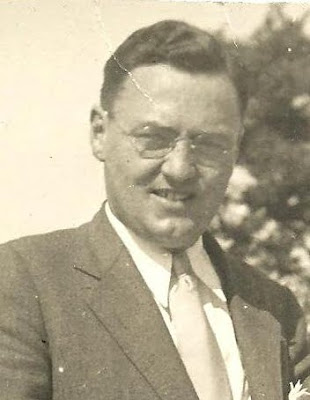Then I happened upon a document from Scotland - a report written in 1806 by Henry Erskine, twice Lord Advocate of Scotland. I had no idea as to who he was but it was from Scotland and that was all that mattered to me. I paid $25.00 for the 1806 document signed by Henry Erskine. For thirty years, the document has remained in my collection during which time I have never opened it nor read it's contents. Over the past few years I have become more and more concerned with my inability to properly care for and preserve this original manuscript that has survived for 205 years, likely not in the best of archival conditions for most, if not all, of that time.
So the time has come to fix that problem. As my wife and I prepare for this year's genealogy vacation and visits to friends and family, I will be donating the manuscript to the University of Guelph's (Ontario, Canada) Centre for Scottish Studies. It's somewhat embarrassing to admit but I began discussions about donating the manuscript with Kevin James, a professor at the Centre and a regular panelist on the Canadian genealogy television show Ancestors in the Attic, back in 2007. Well, the time has come.
But before it goes into the Centre's collection, here is a transcript of the text of Henry Erskine's report (I had to read it once before I donated it):
"To The Kings Most Excellent Majesty
May it please your Majesty
In humble obedience to your Majesty’s Commands signified to me by the Right Honourable Earl Spencer one of your Majesty’s Principal Secretaries of State and assigns the Sole benefit and Advantage of his said invention within that part of your Majesty’s Kingdom of Great Britain called Scotland aforesaid for the Space of fourteen years if your Majesty shall be graciously pleased so to do –
Provided the said Petitioner do within such reasonable time as shall be limited in the said Letters Patent to be computed from the date thereof cause a particular description of the nature of his said Invention, and in what manner the same is performed under his hand to be enrolled in your Majesty’s Chancery in that part of your Majesty’s Kingdom of Great Britain called Scotland aforesaid otherwise the said Letter patent to be void.
All which is humbly submitted to your Majesty’s Royal Wisdom by
(signed) Henry Erskine
Majesty to encourage all arts and inventions which may be for the public good I am humbly of opinion that your Majesty may by your Royal Letters Patent under the seal appointed by the Treaty of Union to be made use of in that part of Great Britain called Scotland in place of the former Great Seal thereof grant unto the Petitioner his Executors, Administrators referring to me the annexed petition of Thomas Johnson Mechanic in Glasgow to consider thereof and to report my opinion what may be properly done thereon.
Which petition sets forth – That your Petitioner hath after much trouble, labour and expense invented a machine for Weaving Yarn. That your Petitioner is the first and true Inventor thereof and the same hath never been made or used by any other person or persons to the best of your petitioner’s knowledge and belief. Your Petitioner therefore most humbly prays that your Majesty will be most graciously pleased to grant unto your petitioner his executors Administrators and assigns your Majesty’s Royal Letters of Patent under the Seal appointed by the Treaty of Union to be made use of in that part of Great Britain called Scotland in place of the former Great Seal thereof for the sole use benefit and advantage of his said Invention within that part of Great Britain called Scotland for and during the term of fourteen years and that your Majesty may be pleased to direct that your Majesty’s said Royal Letters Patent may pass the said Seal per Lattum.
And I humbly beg leave to certify to your Majesty that in support of the allegations contained in the said petition the Affidavit of the Petitioner hath been laid down before me whereby he maketh Oath that he is the first and true Inventor of this said Machine for Weaving Yarn and that the same hath never been made or used by any other person or persons to the best of his knowledge and belief.
Upon consideration of all which, and as it is entirely at the hazard of the said Petitioner whether the said Invention is new, or will have the desired success, and as it may be reasonable for your Majesty."







